2013-2018 Toyota RAV4 Parts Buying Guide, Maintenance, and More
The 2013 model year saw Toyota roll out an all-new, fourth generation of its RAV4 compact crossover. While similar in size to its predecessor, the fourth-gen model’s styling made it clear this was a brand-new design. Among its key attributes were the excellent build quality and reliability that helped establish the RAV4 as an all-star in the compact SUV class. Like the current RAV4, the previous generation offered gasoline and hybrid options.
Functionally, we think the fourth-generation RAV4’s top-hinged tailgate is an improvement on the heavy side-opening door used on previous models, from which Toyota hung the spare tire.
If you’re in the market for a used compact SUV and the RAV4 is on your shopping list, read on for a comprehensive guide to common issues and maintenance requirements.
For more information on the 4th-generation Toyota RAV4, refer to our table of contents.
Table of contents
- Fourth-generation (2013-2018) Toyota RAV4 Specifications
- 2013-2018 Toyota RAV4 Commonly Reported Problems
- 2013-2018 Toyota RAV4 Gas Mileage
- 2013-2018 Toyota RAV4 Recalls
- 2013-2018 Toyota RAV4 Common Parts: Wheels
- Hubcaps
- 2013-2018 Toyota RAV4 Headlights
- 2013-2018 Toyota RAV4 Headlight Bulbs
- 2013-2018 Toyota RAV4 Taillights
- 2013-2018 Toyota RAV4 Wiper Blades
- 2013-2018 Toyota RAV4 Spark Plugs
- 2013-2018 Toyota RAV4 Brake Pads
- 2013-2018 Toyota RAV4 Tires
- 2013-2018 Toyota RAV4 Cabin Air Filter
- 2013-2018 Toyota RAV4 Engine Air Filter
- 2013-2018 Toyota RAV4 Front Bumper
- 2013-2018 Toyota RAV4 Battery
- 2013-2018 Toyota RAV4 Oil Filter
- 2013-2018 Toyota RAV4 Oil
- 2013-2018 Toyota RAV4 Key Fob Battery
- 2013-2018 Toyota RAV4 Maintenance Schedule
- 2013-2018 Toyota RAV4 Modifications and Accessories
- 2013-2018 Toyota RAV4 Frequently Asked Questions (FAQs)
Fourth-generation (2013-2018) Toyota RAV4 Specifications
The fourth-gen RAV4 dropped the previous model’s available V6 engine, leaving a 2.5-liter four-cylinder and six-speed automatic transmission as the only power choice with 176 hp and 172 lb-ft of torque.
In 2016, Toyota added the first-ever RAV4 Hybrid, whose specially tuned 2.5-liter four-cylinder and electric motors added up to 194 hp. It put its power to the ground via a continuously variable transmission.
Gas models were standard with FWD and could be optioned with AWD, while all hybrid models came with AWD.
2013-2018 Toyota RAV4 Commonly Reported Problems
There's some debate about whether a whining noise from the RAV4's drivetrain is normal.
In this discussion, RAV4 owners discuss how the fuel-saving “eco” mode can cause delayed transmission engagement when shifting from park to drive.
If your RAV4’s drivetrain exhibits a shuddering sensation, it could be due to a flaw with the transmission’s torque converter, which could be covered by the extended warranty discussed here.
Harsh shifting is another complaint that owners have leveled at the RAV4’s transmission.
2013-2018 Toyota RAV4 Gas Mileage
If good fuel economy is at the top of your list, look for a 2016-or-newer RAV4 Hybrid, whose EPA estimates are 34-mpg city, 30-mpg highway, and 32-mpg combined.
Next on the list is the FWD gas powertrain, which is rated at 23/30/26 mpg (city/hwy/combined), and in an AWD model you can expect to get 22 mpg in city driving, 28 mpg on the highway (or 29 mpg for the 2013 model) and a combined rating of 24 mpg.
2013-2018 Toyota RAV4 Recalls
Toyota issued just a handful of recalls for the fourth-generation RAV4, most of them minor. NHTSA recall #15V144000 covered more than 110,000 examples of the RAV4 whose electric power steering could fail, and fewer than 17,000 models were recalled in 2016 under campaign #16V198000 for an ABS sensor flaw that could affect the effectiveness of the anti-lock braking and stability control systems.
2013-2018 Toyota RAV4 Common Parts: Wheels
Years of driving can cause all sorts of damage to your RAV4’s stylish alloy wheels. If your original wheels are suffering from curb rash or corrosion, or have been dented by potholes, Road Ready Wheels makes a direct-fit replacement for the 18-inch alloys that uplevel RAV4 trims wore when they drove off the assembly line.
Hubcaps
Entry-grade versions of the RAV4 came with steel wheels dressed up with hubcaps. Carolina Wheel Covers sells a direct-fit replica that looks exactly like the factory part, except without the Toyota logo in the center; we like this option because it’s less expensive than Toyota’s OEM hubcaps but preserves the factory appearance.
For an even better deal, you can also check out this set of four MARROW aftermarket hubcaps for the RAV4, which emulate one of the alloy wheel styles Toyota offered on the fourth-gen model.
2013-2018 Toyota RAV4 Headlights
Your Toyota RAV4’s headlights take a lot of abuse: they can easily be cracked in a fender-bender, or from being hit by rocks and debris thrown up by other vehicles on the road. If you need to replace your RAV4’s headlight assemblies, aftermarket parts are a cost-effective option compared to Toyota’s OEM units.
Carlights360 makes this pair (left and right) that is an exact-fit replacement for the factory-installed headlights in 2013-2015 RAV4 models and is DOT and SAE certified.
Toyota refreshed the RAV4’s styling in 2016, so this ACANII set of housings is made specifically for 2016-2018 models. ACANII says these lights also bear DOT and SAE certifications and meet U.S. road safety regs.
2013-2018 Toyota RAV4 Headlight Bulbs
You should replace your Toyota RAV4’s headlight bulbs periodically, even if they’re not burned out: halogen bulbs grow dim with age, but they do so slowly enough you may not notice the reduction in light output.
If you do a lot of night driving on unlit highways, we suggest the Philips CrystalVision 9005 replacement headlight bulbs for the Toyota RAV4. While they’re more expensive than a basic halogen replacement, these bulbs put out a whiter, brighter light that will make nighttime driving easier on your eyes.
2013-2018 Toyota RAV4 Taillights
Your RAV4’s brake lights are just as important to safe driving as the headlights. If your regular safety walkaround reveals a burned-out brake light, the Philips LongerLife 7443 is an affordable replacement for the dual-filament combination brake/taillight bulbs used in the fourth-generation Toyota RAV4.
2013-2018 Toyota RAV4 Wiper Blades
Your Toyota RAV4 came from the factory with a 26-inch driver’s side and a 16-inch passenger side wiper on the front windshield, and a 10-inch rear wiper. If you notice one or more of your RAV4’s wipers are chattering across the glass or leaving streaks behind, it’s time to replace all three. WiperBladesUSA sells a complete set of Rain-X WeatherBeater wipers for the RAV4 that use friction reducers and multiple pressure points to ensure an effective wipe no matter how hard it’s raining. This kit comes with a bonus microfiber cloth for cleaning your car’s interior.
2013-2018 Toyota RAV4 Spark Plugs
Spark plugs are not moving parts, but they are considered a wear item on your Toyota RAV4: over time, a spark plug’s electrodes can become coated in carbon and other deposits that affect the plug’s ability to efficiently ignite fuel. When Toyota built your RAV4, the factory installed Denso SK16HR11 iridium-tipped spark plugs and recommends replacing them with the same ones, when the time comes, to keep your RAV4 running efficiently and reliably. You can buy this set of four replacement spark plugs directly from Denso.
2013-2018 Toyota RAV4 Brake Pads
Are your Toyota RAV4’s brakes making embarrassing squeaking and squealing noises every time you apply the brakes? It could be time to replace the brake pads. Brakes are a critical safety feature, but that doesn’t mean that effective replacement parts have to be expensive. You can bring your 2013-2018 RAV4’s braking system back up to grade for less than $50 with Wagner’s ZD1210 front and ZD1212 rear brake pads. These direct-fit aftermarket replacements are designed to restore your RAV4’s braking performance to factory levels.
2013-2018 Toyota RAV4 Tires
Depending on your Toyota RAV4’s trim level, it uses either 225/65R17 or 235/55R18 tires. Figuring out which size you need at replacement time is easy: check the sidewall of one of the tires, or look at the placard on the driver’s door jamb.
If you’re replacing a set of 17-inch tires, consider the Michelin Cross Climate SUV. It’s a true all-season tire conceived primarily for dry and wet conditions but designed to provide good grip in light to moderate winter driving, too.
For RAV4 models with 18-inch rims, the Continental Cross Contact LX25 is a solid choice, having been engineered for on-road SUV duty with low noise, good grip on wet roads, and a long tread life. Continental also makes this tire in the RAV4’s 17-inch size.
2013-2018 Toyota RAV4 Cabin Air Filter
If you’ve been noticing your RAV4’s air conditioning and HVAC system isn’t blowing as strong as it used to, the first thing to check for is a clogged cabin air filter.
FRAM’s CF10285 is a direct replacement for the RAV4’s factory cabin filter and promises to capture allergens, dirt and dust, and other pollutants so you don’t have to breathe them in.
2013-2018 Toyota RAV4 Engine Air Filter
Your RAV4’s engine air filter has the big job of catching airborne debris and contaminants so they don’t get pulled into the engine itself where they can cause accelerated wear to the pistons, cylinder walls, and other moving parts. You won’t do much better than a genuine Toyota replacement.
2013-2018 Toyota RAV4 Front Bumper
Your fourth-gen Toyota RAV4’s front bumper consists of two elements: a body-color bumper cover, and a black grille insert. If you’ve been involved in a crash that damaged your RAV4’s front end, you may need to replace both.
MBI Auto makes a replacement main bumper cover for the RAV4 that comes painted and ready to install. When you place your order, you’ll be asked to provide your RAV4’s paint code so MBI Auto can match it. The company also sells this bumper cover unpainted at a lower price so that you can paint it yourself or have a local body shop do the work.
And should you need to replace your RAV4’s black front grille insert, here’s one from Garage-Pro that will fit. Note that this part has provisions for the RAV4’s available front parking sensors; if your car doesn’t have that feature, contact Garage-Pro about specifying a different part.
2013-2018 Toyota RAV4 Battery
Your fourth-generation Toyota RAV4 uses a BCI Group 35 battery, like the Optima 8020-164 RedTop. It has 720 cold cranking amps (CCA) for reliable cold-weather starting, promises to last three times longer than other batteries, and is 15 times more resistant to vibration.
2013-2018 Toyota RAV4 Oil Filter
Instead of the spin-on oil filter found on many modern car engines, the RAV4’s engine uses a replacement filter cartridge.
If you’re looking to keep your DIY oil changes as affordable as possible, you can buy a pair of OEM Toyota filter elements, which are designed to meet the RAV4 engine’s factory filtration requirements.
For about the same cost, you can buy the FRAM XG9972 Ultra Synthetic oil filter, which uses dual-layer filter media to guarantee engine protection for up to 20,000 miles between oil changes. While it’s more expensive than an OEM filter, we’d argue the extra protection is worth it.
2013-2018 Toyota RAV4 Oil
Toyota recommends 0W20 engine oil for the fourth-generation RAV4, which is formulated to flow well for good lubrication at cold temperatures while also protecting your engine in its optimal temperature range.
Valvoline’s Advanced full synthetic oil promises 50 percent more protection against engine wear than the industry standard, and contains detergents that help prevent the formation of sludge and other deposits that can harm your RAV4’s engine. With a filter change, the RAV4’s engine takes 4.6 quarts of fresh oil, so this 5-quart bottle is all you’ll need if you change the oil yourself.
2013-2018 Toyota RAV4 Key Fob Battery
All 2013-2018 Toyota RAV4 models have keyless entry regardless of trim level. Signs of a weak key fob battery include a keyless system that only works at close range, or doesn’t work at all.
If your RAV4 has the conventional keyless system that requires you to press the buttons on the fob to lock and unlock your car, you will need a CR2016 battery like this one from Energizer, which comes in a pack of five and promises a long service life.
RAV4 models that came with the optional passive keyless entry system, which unlocks the door when you touch the handle, use a CR2032 battery in the fob. Energizer sells them, too, in this two-, four-, six-, and 10-pack, with a promise that the battery will still have juice in it after 10 years in storage.
2013-2018 Toyota RAV4 Maintenance Schedule
Toyota’s maintenance schedule suggests inspecting and replacing certain items on your RAV4 every 5,000 miles. If you regularly tow, drive less than five miles at temperatures below freezing, or frequently travel dirt or dusty roads, change the oil at that interval. If you mostly do longer drives at warmer temperatures, a 10,000-mile oil change interval is indicated.
You should inspect the engine coolant every 15,000 miles and the condition of the brake pads every 5,000 miles. You’ll need to replace the engine and cabin air filters every 30,000 miles.
For AWD RAV4 models, Toyota recommends re-torquing the driveshaft bolts and changing the transfer case and rear differential oil every 30,000 miles. Toyota lists an inspection for transmission fluid leakage at the same time.
Also, Toyota suggests inspecting the driver’s floor mat installation every 5,000 miles to make sure it’s not interfering with the brake and accelerator pedals.
2013-2018 Toyota RAV4 Modifications and Accessories
If you’re buying (or have bought) a fourth-generation Toyota RAV4 to drive on long road trips or outdoor adventures, you may find you need more cargo space than is available in the cabin. If you want to expand your RAV4’s carrying capacity with a roof rack or carrier, you may first need to add bars like these genuine Toyota parts.
Then you can begin adding accessories that are designed to attach to the cross bars, like the Goplus universal-fit kayak carrier.
Another option for rooftop cargo is the SportRack Vista XL cargo box, which can hold up to 100 pounds and boasts 18 cubic feet of weatherproof interior volume.
2013-2018 Toyota RAV4 Frequently Asked Questions (FAQs)
A: This is a Toyota we're talking about: of course it's reliable. In fact, Consumer Reports ranks this generation of RAV4 as "above average" for reliability, something its successor hasn't even achieved.
Q: How many miles will the 2013-2018 Toyota RAV4 last?
A: Take care of a RAV4 and it'll take care of you: reports suggest the fourth-generation RAV4 will last for over 200,000 miles.
Q: Which 2013-2018 Toyota RAV4 model year is best?
A: If you're feature-hunting, we recommend going for the 2017 or 2018 model year RAV4, which comes with plenty of modern tech, including adaptive cruise control and other driver assists. If you're after a more straight-forward mode of transport, a lower-trim 2016 includes the improvements that came with the mid-cycle facelift, at a discount compared to newer models.
Q: What are the most common 2013-2018 Toyota RAV4 problems?
A: The fourth-generation Toyota RAV4 doesn't come with many complaints outside the usual wear and tear. Some owners report the older infotainment screen can be hard to read in the sun, with little glare protection. Other common issues of RAV4s from this vintage include failing water pumps, and harsh reverse gear engagement from the six-speed automatic transmission.
Q: Is the 2013-2018 Toyota RAV4 comfortable?
A: That depends on what you're using it for. On smooth roads, many owners report a comfortable ride, regardless of trim. Rougher roads can result in a harsher ride, made worse on models with larger wheels and low-profile tires.
We are committed to finding, researching, and recommending the best products. We earn commissions from purchases you make using the retail links in our product reviews. Learn more about how this works.
More by Chris Chase





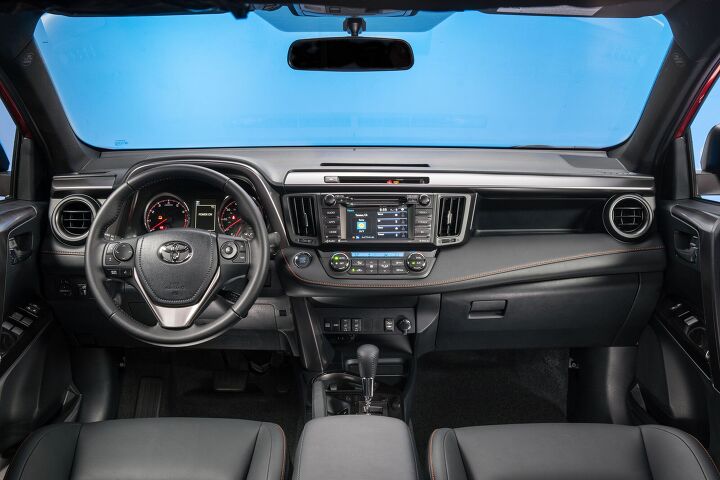































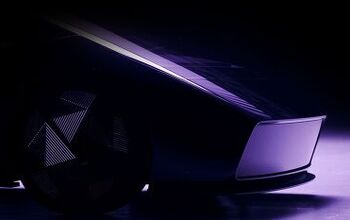





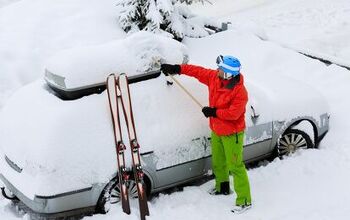
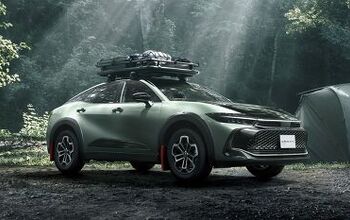
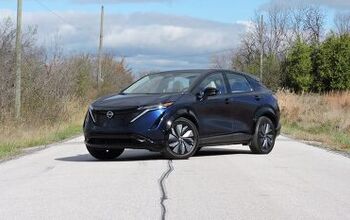

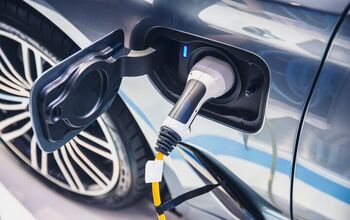
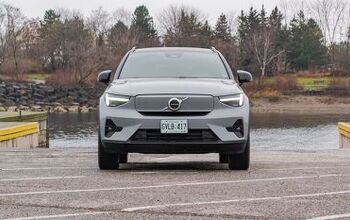



Comments
Join the conversation